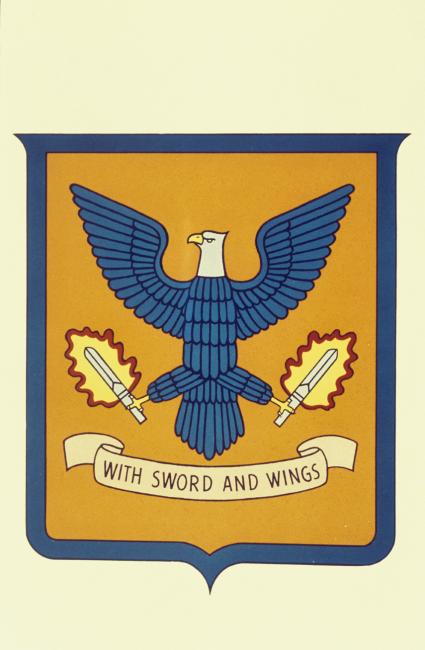8th Air Force FO 251 BOMBER ESCORT
25 February 1944Description
A combined force of 899 fighters of types: P-38; P-47 and P-51 are despatched to provide escort to heavy bombers attacking the German aircraft industries at Regensberg, Augsburg, Stuttgart and Furth, Germany in the final Day 6 operation of BIG WEEK. Mission Summary follows:
A combined force of 73 P-38s from 20FG & 55 FG are despatched. 1 aircraft is Damaged Beyond Repair (DBR) but TN was not recorded in source data - 1RTD. The fighters in this element claim 1-2-0 of attacking German aircraft. There are no other losses or casualties.
A combined force of 687 P-47s in despatched. 8th Air Force: 4FG; 56FG; 78FG; 352FG; 353FG; 355FG; 356FG; 359FG; and 361FG are joined by IX Fighter Command: 358FG; 362FG; and 365FG. 1 aircraft from IX FC 358FG Failed to Return (FTR) 1KIA. 6 aircraft are damaged. The fighters in this element claim 13-2-10 of attacking German aircraft. There are no other losses or casualties.
A combined force of 139 P-51s from 357FG and IX Fighter Command 354FG and 363FG participate. 2 aircraft of 357FG Failed to Return (FTR) - 2POW. The fighters in this element claim 12-0-3 of attacking German aircraft. There are no other losses or casualties.
Mission Details
Regensburg, Germany
Description: FIGHTER ESCORT
Aircraft Type: P-38 Lightning
Notes: Division of aircraft between VIII Fighter Command and IX Fighter Command not included in available data, so aircraft despatch totals include both Fighter Commands, claims and losses limited to VIII Fighter Command, 361st Fighter Group, 363rd Fighter Group and 365th Fighter Group flew two missions in support of 8th Air Force mission 235.

- Unit Hierarchy: Group
- Air Force: Eighth Air Force
- Type Category: Fighter

- Unit Hierarchy: Group
- Air Force: Eighth Air Force
- Type Category: Fighter
Mission Statistics
- People returned to duty: 1
- Enemy aircraft destroyed by fighter: 1
- Enemy aircraft probably destroyed by fighter: 2
- Aircraft sent: 73
- Aircraft damaged beyond repair: 1
Stuttgart, Germany / Augsburg, Germany
Description: FIGHTER ESCORT
Aircraft Type: P-47 Thunderbolt
Notes: 358th Fighter Group, 362nd Fighter Group and 365th Fighter Group from IX Fighter Command contribute P-47s to the escort, number not available in source data, so those despatched from VIII Fighter Command and IX Fighter Command have been bundled together. Losses and claims are only those of VIII Fighter Command.

- Unit Hierarchy: Group
- Air Force: Eighth Air Force
- Type Category: Fighter

- Unit Hierarchy: Group
- Air Force: Eighth Air Force
- Type Category: Fighter

- Unit Hierarchy: Group
- Air Force: Eighth Air Force
- Type Category: Fighter
![Ground crew of the 356th Fighter Group congratulate the pilot of a P-47 Thunderbolt nicknamed "Zombie" at Martlesham Heath air base. Handwritten caption on reverse: 'ZOMBIE yellow, black outline. [illegible text] black white common practice of 361st FS.'](https://assets.americanairmuseum.com/s3fs-public/styles/max_650x650/public/freeman/media-377162.jpg?itok=mPZN0Ow5)
- Unit Hierarchy: Group
- Air Force: Eighth Air Force
- Type Category: Fighter

- Unit Hierarchy: Group
- Air Force: Eighth Air Force
- Type Category: Fighter
Mission Statistics
- People killed in action: 1
- People wounded in action: 1
- Enemy aircraft destroyed by fighter: 13
- Enemy aircraft probably destroyed by fighter: 2
- Enemy aircraft damaged by fighter: 10
- Aircraft sent: 687
- Aircraft missing in action: 1
- Aircraft damaged: 6
Regensburg, Germany
Description: FIGHTER ESCORT
Aircraft Type: P-51 Mustang
Notes: 354th Fighter Group and 363rd Fighter Group from IX Fighter Command contribute P-51s to the escort. Number stated is the combined total of VIII Fighter Command and IX Fighter Command. Losses and claims are those of 8th Air Force only.

- Unit Hierarchy: Group
- Air Force: Ninth Air Force
- Type Category: Fighter

- Unit Hierarchy: Group
- Air Force: Eighth Air Force
- Type Category: Fighter

- Unit Hierarchy: Group
- Air Force: Ninth Air Force
- Type Category: Fighter
Mission Statistics
- Prisoners of war: 2
- Enemy aircraft destroyed by fighter: 12
- Enemy aircraft damaged by fighter: 3
- Aircraft sent: 139
- Aircraft missing in action: 2
Revisions
Lee Cunningham 11-Feb-2016. Made connections to IX FC units, Place and added claims on enemy aircraft to P-51 element per "the Mighty Eighth War Diary", Roger A. Freeman.
Lee Cunningham 11-Feb-2016. Made connections to IX FC units, added IX casualties, added claims on enemy aircraft per "the Mighty Eighth War Diarr", Roger A. Freeman and "Losses of the 8th & 9th Air Forces", Stan Bishop & John A. Hey MBE.
Lee Cunningham 11-Feb-2016. Added Place and fighter claims on enemy aircraft to P-38 statistics per "The Mighty Eighth War Diary", Roger A. Freeman.
Lee Cunninghm 11-Feb-2016. Added Mission Narrative per "The Mighty Eighth War Diary", Roger A. Freeman.
Lee Cunningham, 8th Air Force missions research database / Stan Bishop's 'Losses of the US 8th and 9th Air Forces', the Combat Chronology of the US Army Air Forces and the work of Roger Freeman including the 'Mighty Eighth War Diary'.